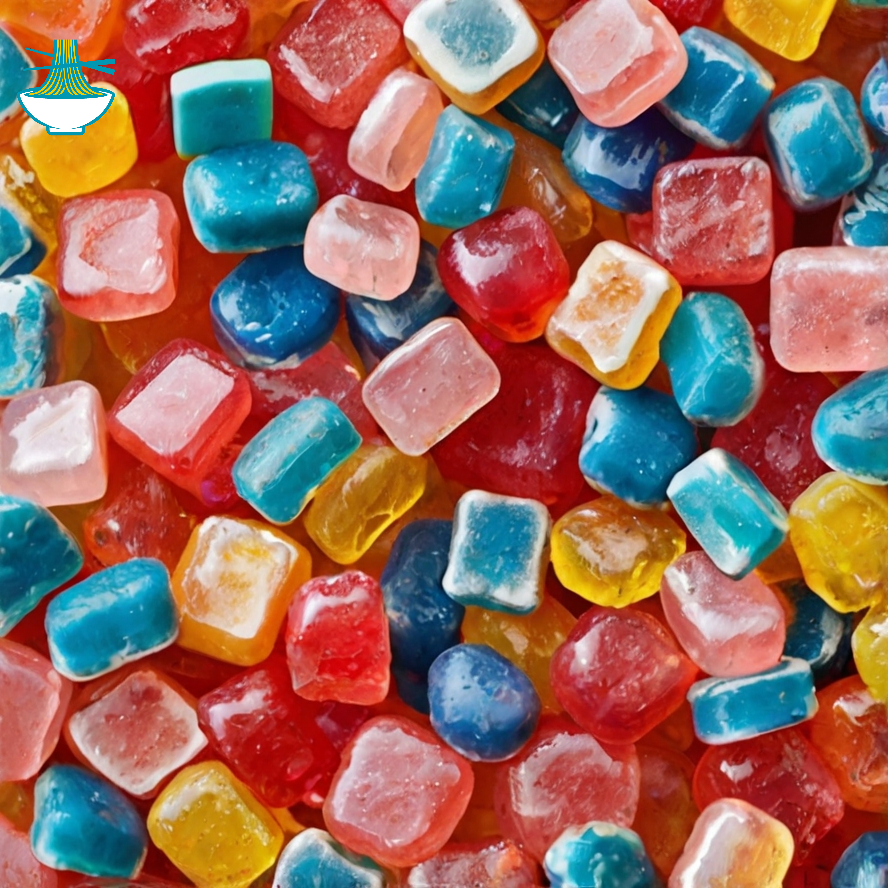Experience the delightful crunch of Jersey Jersey Rock Candy, a classic hard candy that's as much a treat for your taste buds as it is a souvenir of Jersey. Crafted with care, these colorful confections are perfect for savoring or sharing a taste of Jersey's sweetness with loved ones.
Here's a basic recipe for making Jersey Rock Candy:
Ingredients:
- 2 cups water
- 4 cups granulated sugar
- Food coloring (optional)
- Flavoring extract (e.g., vanilla, mint, or fruit flavors)
- Confectioners' sugar or cornstarch (for dusting)
Equipment:
- Large saucepan
- Candy thermometer
- Wooden spoon
- Heatproof measuring cup
- Heatproof bowl
- Baking sheet
- Parchment paper
Instructions:
1- Line a baking sheet with parchment paper and dust it lightly with confectioners' sugar or cornstarch. This will prevent the candy from sticking.
2- In a large saucepan, combine water and sugar. Stir over medium heat until the sugar dissolves.
3- Insert a candy thermometer and bring the mixture to a boil without stirring. Continue boiling until the temperature reaches 300°F (hard crack stage).
4- Remove the saucepan from heat and let it cool for a few minutes. Add a few drops of food coloring and flavoring extract to the mixture, stirring gently.
5- Carefully pour the hot syrup onto the prepared baking sheet. Allow it to cool and harden completely.
6- Once the candy has hardened, break it into small pieces using a hammer or mallet.
7- Store the Jersey Rock Candy in an airtight container or wrap it in decorative bags for gifting.
Enjoy your homemade Jersey Rock Candy!
Nutritional Values :
Here are the approximate nutritional values for the main ingredients used in making Jersey Rock Candy:
Water (2 cups):
- Calories: 0
- Fat: 0 g
- Carbohydrates: 0 g
- Protein: 0 g
Benefits: Essential for hydration and helps dissolve sugar in this recipe.
Granulated Sugar (4 cups, ~800g):
- Calories: 3,200
- Fat: 0 g
- Carbohydrates: 800 g
- Protein: 0 g
Benefits: Adds sweetness to the mixture. High sugar intake should be moderated as excessive consumption can lead to health issues like weight gain and diabetes.
Food Coloring (optional):
- Calories: Negligible
- Fat: 0 g
- Carbohydrates: 0 g
- Protein: 0 g
Benefits: Primarily used for aesthetic purposes to enhance the visual appeal of the final product.
Flavoring Extract (e.g., vanilla, mint, or fruit flavors):
- Calories: Varies (typically negligible per serving)
- Fat: Varies
- Carbohydrates: Varies
- Protein: Varies
Benefits: Adds flavor without significantly impacting the nutritional profile. Extracts like vanilla or mint can enhance taste and add aromatic complexity.
Confectioners' Sugar or Cornstarch (for dusting):
Confectioners' Sugar
- Calories: 50 per tablespoon (approximately 8g)
- Fat: 0 g
- Carbohydrates: 13 g
- Protein: 0 g
Benefits:Adds smooth sweetness, perfect for frostings and dusting desserts.
Cornstarch:
- Calories: ~30 per tablespoon (approximately 8g)
- Fat: 0 g
- Carbohydrates: ~7 g
- Protein: 0 g
Benefits: Confectioners' sugar provides a smooth coating and extra sweetness, while cornstarch prevents sticking and is a less sweet dusting alternative.
These values are approximate and may vary based on the specific brands and types of ingredients used.


Comments